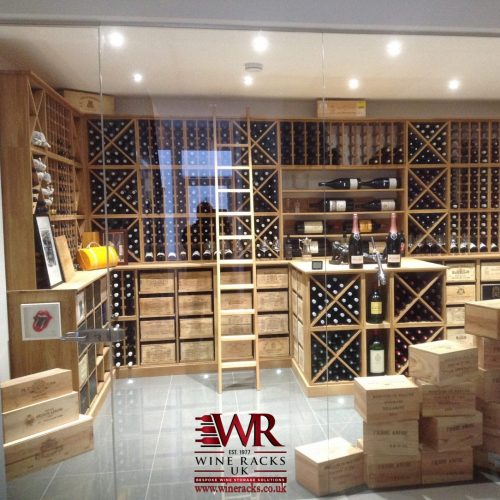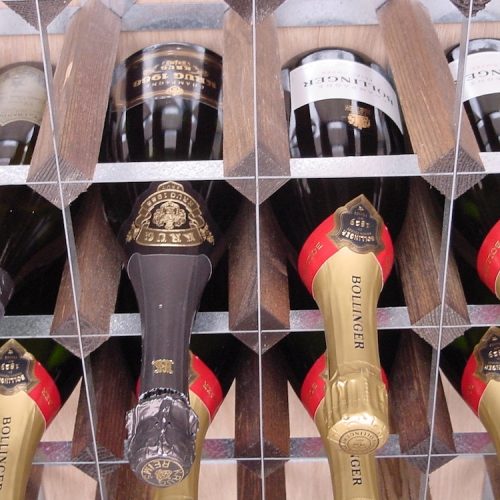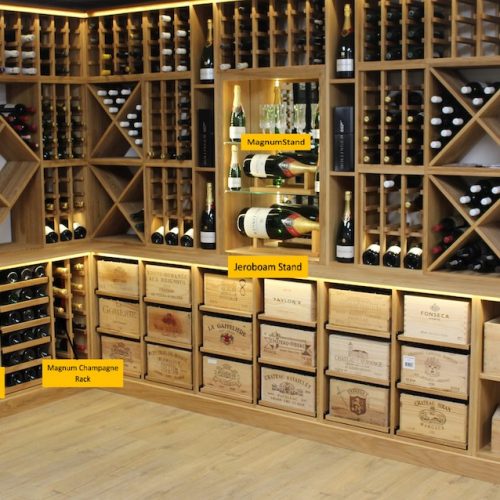Install a custom-built Champagne rack that allows for riddling.
Wine racks are becoming an increasingly popular feature for the home, whether as an add-on to a new kitchen, a feature for under the stairs, or a full cellar conversion.
But what about irregular sized bottles such as large Magnum or Nebuchadnezzar Champagne bottles? How do you store them without affecting the quality or value? The solution is to install a custom-built Champagne rack that allows for riddling.
For a free quote
For any wine room design service,
please call 01159441434 or contact us via our form.
Please include your requirements and approximate dimensions to provide you with a quote.
Will our standard wine racks hold Champagne bottles?
Our standard bottle wine racks will hold Moet style Champagne bottles. You need Champagne racks for Bollinger, Krug and Dom Perignon bottles.
Are the Champagne wine racks deeper that the standard bottle wine racks?
The Champagne racks are the same depth as standard bottle wine racks. However, Champagne Magnum wine racks are deeper.
Can we make wine racks for larger Champagne bottles?
We can make racks or display stands for all sizes of bottles.
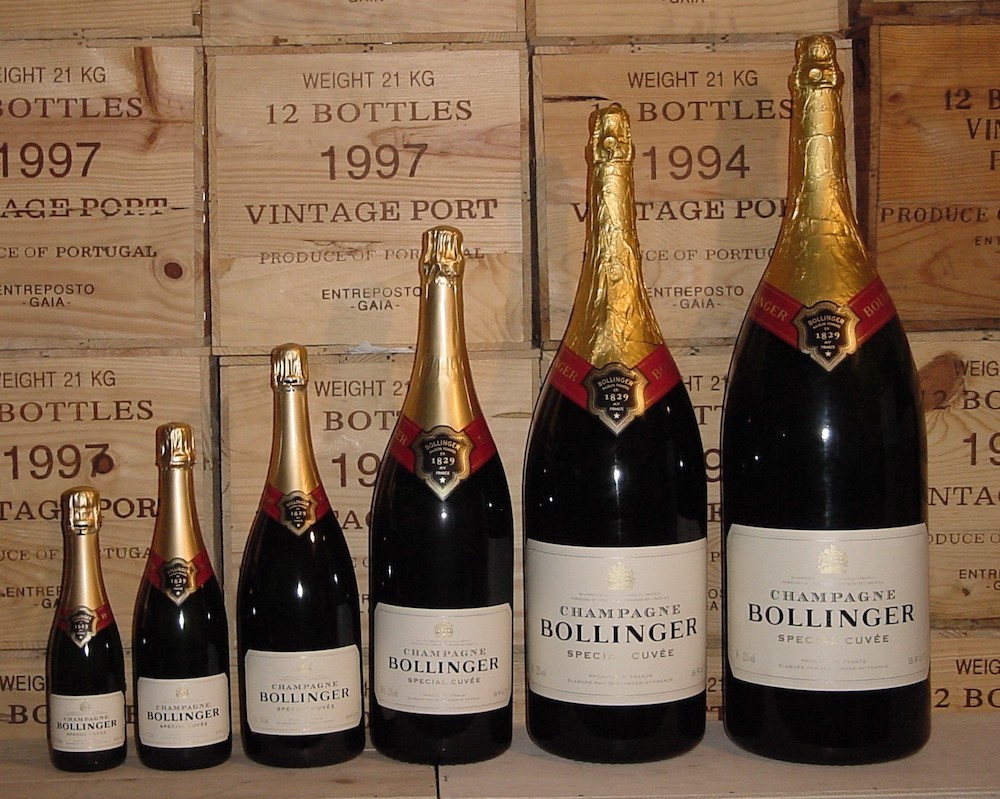
What size Champagne bottles are available?
You’re probably aware of the difference in size between your average wine bottle and, say, a Magnum bottle, but are you aware just how many size Champagne bottles there are? See our Champagne bottle size guide.
- The quarter (20cl)
- The half-bottle (37.5cl)
- A standard bottle (75cl)
- Magnum (1.5 litres or 2 bottles of Champagne)
- Jeroboam (3 litres or 4 bottles of Champagne)
- Methuselah (6 litres or 8 bottles of Champagne)
- Salmanazar (9 litres or 12 bottles of Champagne)
- Balthazar (12 litres or 16 bottles of Champagne)
- Nebuchadnezzar (15 litres or 20 bottles of Champagne)
- Solomon (18 litres or 24 bottles of Champagne)
- Sovereign (26.25 litres or 35 bottles of Champagne)
- Primat (27 litres or 36 bottles of Champagne)
- Melchizedek (30 litres or 40 bottles of Champagne)
- Traditional Wine Racking
- Solid Oak
- Solid Pine
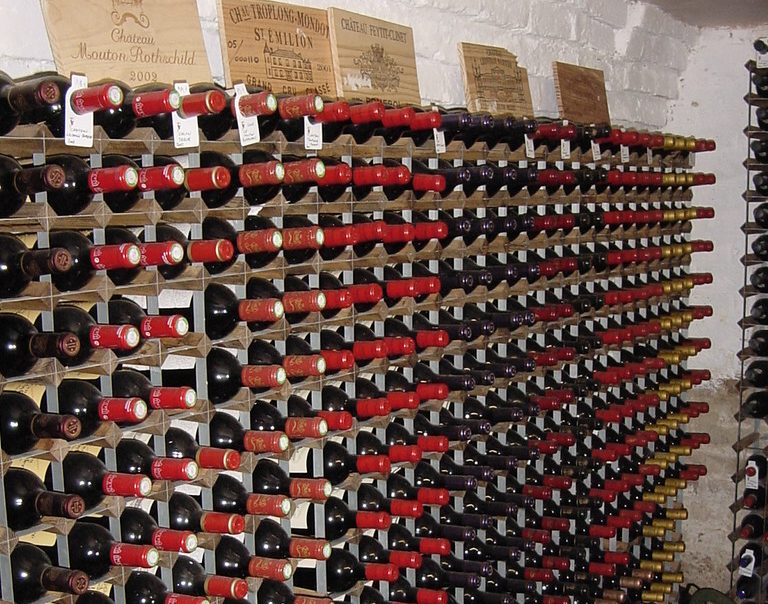
Traditional Wine Racking
Galvanised steel and wood racking is economical and easy to use and can be stained or left in natural pine. We have many Traditional wine racks, including Double Depth, Arched and Custom Designs.
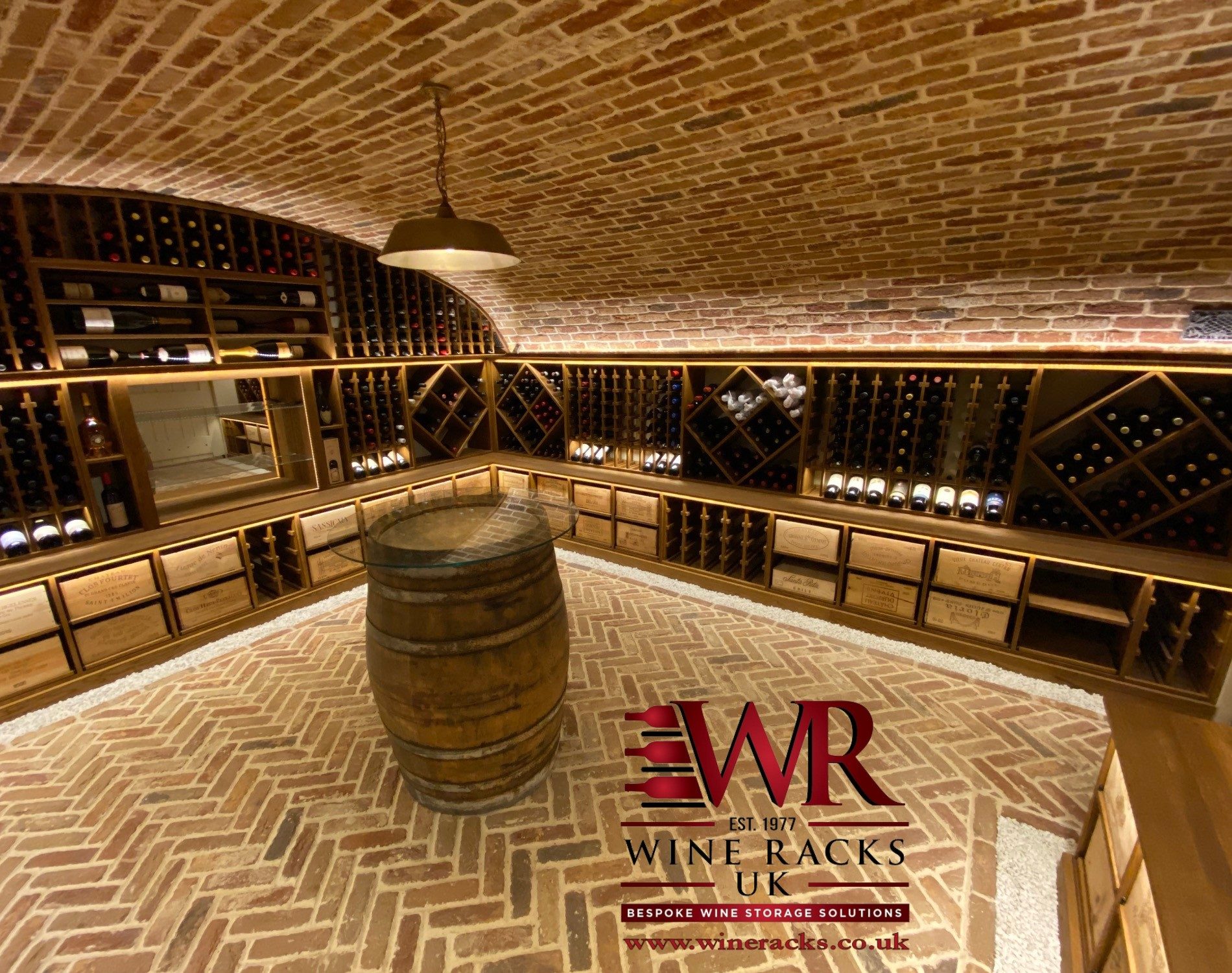
Solid Oak
Check out our Solid Oak Racking for more details on Oak Racking, Cubes, Case Racks, Plinths and Tops
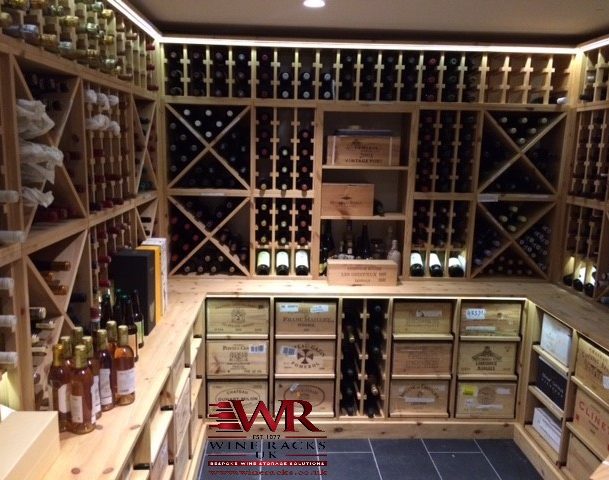
Solid Pine
So, what is Riddling?
So, what exactly is riddling, and why is it important? In this article, we explain the art of riddling, how it protects your Champagne, and why Champagne racks are a worthwhile investment. Here are the key questions we will cover:
- What is Riddling?
- How should I store Champagne at home?
- What size Champagne bottles are available?
In this section, we will aim to answer the most popular questions, including; how often should you turn cellared wines? How do I rotate bottles? How do I remuage bottles? What is automated remuage? What is disgorgement?
How do I remuage bottles?
In short, riddling or ‘remuage’ involves twisting your Champagne bottles to prevent sediment from gathering at the bottom of the bottle. It is a technique that has been around since the 1960s and prevents the Champagne from becoming cloudy.
Sediment cannot be avoided – it is a naturally occurring byproduct of the fermentation process that continues once any wine or Champagne has been bottled. Champagne racks are specially designed to tilt the neck of the bottle downwards, which allows the sediment (also known as lees) to collect around the cork.
What is automated remuage?
Technological advances have affected all aspects of life and many industries. Wine making is no exception. Automated remuage is the process of using machines to turn and twist the bottles (from 500 to several thousand per week) to push the sediment (yeast deposits) to the neck of the bottle.
For Champagne and sparkling wine producers, it has streamlined the process. Instead of taking four to six weeks to complete the riddling process, the machines reduce the time to between a week and ten days.
It reduces the cost of labour and ensures accuracy at all times.
What is disgorgement?
Every couple of weeks, the bottle must be turned slightly (this doesn’t have to be a full turn, it could be a quarter of a turn) to encourage the sediment to gather before it can be manually removed. The name of this process is ‘disgorgement’ and it uses the force of the pressure within the bottle to push the sediment out without losing the Champagne.
Sometimes the disgorgement date will be included on the bottle, as it is possible for the aromas and flavours to change after the process has been completed.
How often should you turn cellared wines?
This is a sensible question given that this post is about the art of twisting and turning your Champagne bottles. However, it should be noted that the riddling process only applies to Champagne or sparkling wines, and it is only useful if disgorgement takes place.
As we have discussed, sediment is a byproduct of the wine-making process that is unavoidable. But for red wines and others affected in your cellar, it is best to leave them alone. If you do not rotate them, when you eventually come to open them, it will be easier to separate the sediment from the wine.
If you shake the bottle, the sediment will disperse, but you will probably be left with a gritty wine that is not pleasant to drink. The whole design of wine racks is to lay the bottle flat so that the cork remains moist, which stops it from drying and allowing oxygen to enter the bottle.
How to store Champagne at home
In this section, we will answer the most frequently asked questions around at-home Champagne storage, which includes; how do you store Champagne correctly at home? Should I store Champagne in the fridge? How long is Champagne good for after opening? Do you refrigerate Champagne after opening?
How do you correctly store Champagne at home?
To answer this question, you first need to answer another question: how long are you planning on storing your Champagne? If you have filled your converted cellar as an investment and plan to store it long-term, store your bottles on their side or in special custom-built Champagne racks.
If, however, you have bought Champagne for a special occasion that you will celebrate within the next month, you can store the bottle upright.
Regardless of how long you plan to store your Champagne, keep it away from direct sunlight or artificial light. You should also keep it in a cool environment where the temperature is constant. If possible, store it in a climate-controlled cellar or the fridge if you plan to drink it reasonably soon.
It isn’t just heat that can affect a good bottle of wine or Champagne. Extreme cold can also cause damage as it can affect the ageing process. In addition, if the contents of the bottle become frozen, it can cause pressure to build around the cork or the bottle itself, which can cause it to crack.
Should I store Champagne in the fridge?
If you are planning on drinking your Champagne fairly soon, it is okay to store it in the fridge. However, it is not necessarily a long-term solution. The best option is to store your Champagne on its side in a cool place (with a fairly stable temperature) where there is minimal light exposure. The reason for this is that the environment is more natural than the fridge and the humidity is not compromised.
It is recommended you chill your Champagne in the fridge for around 30 minutes before serving, but do not freeze it because this can turn it to slush, ruin the fizz, and also cause pressure to build within the bottle, which can ultimately cause it to crack.
How long is Champagne good for after opening?
After you’ve opened your Champagne, it is best to reseal it as soon as possible to stop all the bubbles from escaping. Whether you have the original cork or a Champagne stopper, it must be sealed tightly so that it does not lose its fizz and go flat instantly.
You should then store the bottle in your fridge, where it will be good for the next three to five days (if stored correctly). After this time, it will lose its fizz, and with it, its flavours.
Do you refrigerate Champagne after opening it?
In short, yes. If you have followed all the steps listed above, you should be able to store your opened Champagne in the fridge to enjoy for the next three to five days. The reason for storing it in the fridge is simple, it slows the process of the bubbles being released.
Wine Racks prides itself on offering a custom service, which means the company can make racks to fit any size bottle, from wine to Champagne, half bottles to Nebuchadnezzar and everything in between.
Find out more about the custom services available by contacting the team.
